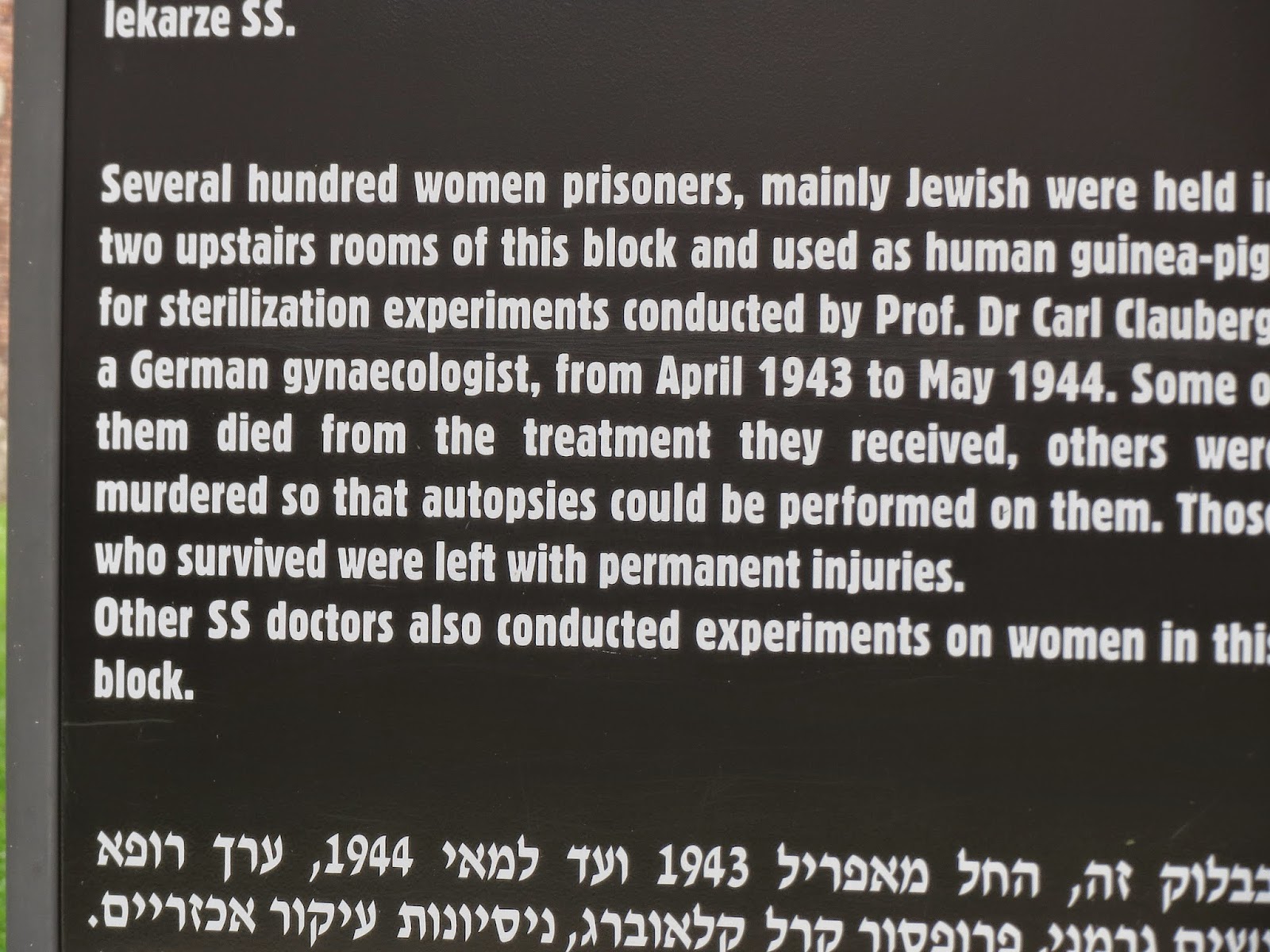N.B. The subject matter and photos below are disturbing. I have enlarged the photos of the signs so they can be better read. AEB
Why visit Auschwitz, you may ask?
Why visit Auschwitz, you may ask?
We’d
decided that the only concentration camp we’d see would be Oswiecm as it’s
called in Polish or Auschwitz as the Germans called it and how most of us know it. There are so many camps we could visit on
this trip and I know many people choose to visit more than just one as each is
very different. For us however, Oswiecm was enough to get a sense of the
atrocities perpetrated by the Nazis against the Jews, Romas and so many others
during WW II. Oswiecm was the scene of the largest attempt at genocide in human
history and though visiting it is a grim experience, it’s an essential element
in understanding the full evil of the Holocaust.
The
medium-sized industrial city of Oswiecm Krakow .
We could have paid a fairly hefty fee and gone on a tour arranged by the hostel
but we preferred getting there by ourselves, being able to go at our own
speed and see exactly what we wanted rather than being shuffled about in a
large group. We made a point of getting there before 10 so we needn’t take a
compulsory tour and could enter as individuals. We picked up a booklet guide I had known about in advance and that proved invaluable as we toured Auschwitz and Birkenau.
Some Background:
The
Auschwitz extermination camp was established in April, 1940 by
the German occupiers in prewar Polish army barracks on the outskirts of
Oswiecm. It was originally established
for Polish political prisoners but then adapted for the wholesale extermination
of the Jews in Europe in fulfillment of Nazi ideology. For this purpose,
the much larger camp at Brzezinka, or Birkenau as we know it, and also referred
to as Auschwitz II, was built 2 kms west of the original site in 1941 and 1942.
It
is now estimated that in total this German-run death factory eliminated well
over a million people of 27 nationalities. The name Auschwitz often describes the whole Auschwitz-Birkenau complex but in 2007 its
UNESCO World Heritage listing changed to ‘Auschwitz-Birkenau: German Nazi
Concentration & Elimination Camp (1940-45).'
 |
| I didn't really know what we'd see but large, red brick buildings like these were not what I expected or envisioned. |
 | ||
| The 1st extermination/crematorium area above and below located just steps from the entrance.
|
 |
| Exterior vents. |
 |
| The urn containing a handful of human ashes, gasthered from Birkenau, commemorates the dead. |
 |
| 5-7 cans were enough to kill 2000 people at a time. |
 |
 |
| Everyone's hair was removed upon entry; Nazis used the hair for wigs and even to fill mattresses. |
 |
| Before entering the camp, this woman weighed approximately 75 kilos or 163 lbs; when the photo was taken, she weighed 25 kilos or a mere 55 lbs. |
 |
| Guardhouse by the 'Wall of Death' |
 |
| For many years, the Allies refused to believe news of the Nazi atrocities. This article was published in 1944. |
 |
| Block 28 |
 |
 |
| Cattle car used to transport prisoners. |
 |
| Jews selected by the SS for immediate death in the gas chambers of Crematoria IV and V were herded along this road. |
 |
| The Nazis, knowng the war was about to end, tried to destroy evidence of their crimes. |
 |
| I remember seeing a haunting photo of Elie Weisel, the Jewish political activist who was a prisoner at Auschwitz, lying in a bunk just like these. |
 |
  |









































No comments:
Post a Comment